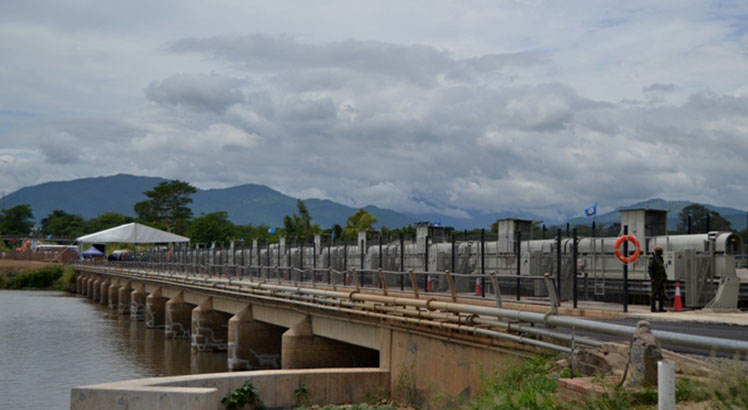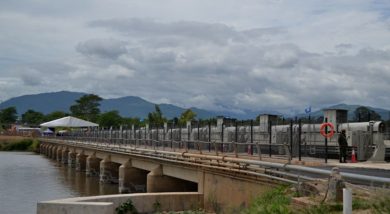Authority in Catch-22 over water levels
In burst of fury, Lake Malawi has exploded, leaving the National Water Resources Authority (NWRA) in a catch-22 situation on how to balance water levels at Kamuzu Barrage in Liwonde, Machinga to protect those along the lakeshore and around its sole outlet Shire River without crippling the nation’s hydro-electricity generation.
The water surge in Lake Malawi has displaced thousands of people, dismantled a tourism sector that had just started recovering from Covid-19 impact and is triggering other hydro-ecological and socioeconomic problems.
NWRA critics say the prevailing situation is a result of its failure to open the barrage that regulates lake level and downstream flow after Cyclone Freddy dumped heavy rains last year.

The authority, in a statement released on March 13 2024,did concede that the water level of 475.95 metres (m) above sea level as of 11 March 2024 was 83-centimetres more than March last year.
But it said before releasing water at the barrage, it has to strike a balance to ensure that hydro-electricity generation downstream is not compromised.
The authority said it would release 600 cubic metres per second to reduce the water level and later increase the volume to a maximum 957 cubic metres per second to lower the lake level.
But critics point to information posted by Multiconsult Group, which upgraded the Kamuzu Barrage, that the maximum release is 1 600 cubic metres per second, suggesting that it is way too low.
Essentially, the recommendations from the Environmental Assessment Report released by the World Bank suggest that the NWRA is releasing less than 40 percent that can be let out by the barrage, thereby keeping flooding at higher than necessary levels.
The development has prompted some sections of the public to accuse NWRA of mismanaging the barrage.
In a video The Nation has seen, but cannot independently verify, some people from Mangochi—one of the districts most affected by the expanding lake—were overheard saying they wanted the authority to open the gates to let the water levels drop in the lakeshore areas.
One of the people said: “The problem we have here is that the water level is steadily rising and is not showing any signs of going down. As we speak, several houses have been submerged and people have been displaced. The problem is that the barrage is closed and water is not passing through.”
However, NWRA spokesperson Masozi Kasambara said the water level is rising because of the heavy and torrential downpours that generated heavy run-offs into Lake Malawi.
“The second reason is the persistent precipitation in the north of the country and in the Republic of Tanzania, which also forms an integral component of the Lake Malawi catchment,” he said.
Kasambara further said the affected structures were below the 477-contour line below sea level, which is “restricted riparian zones to protect life and property”.
In separate interviews yesterday, some local experts backed the NWRA’s management of the barrage, saying if they leave the floodgates fully open during the rainy season it would worsen flooding in the Lower Shire Valley.
WTM Chirwa& Associates Limited managing director Engineer Wilson Chirwasaid the flooding in the lakeshore areas is a result of the gradual rise in water levels in the Great Lakes Region induced by climate change.
“The rise in water levels of Lake Malawi just like in Lake Tanganyika have been on the rise for some years due to increase in rainfall and climate change effects.
Floods have hit hard households and businesses in Mangochi, Salima, Nkhotakota and Nkhata Bay districts along Lake Malawi as well as Machinga along the Shire River.





